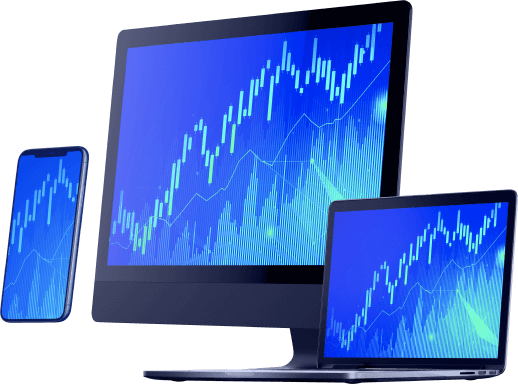What is CFD trading?
The financial market is the foundation on which an entire economic system is dependent, and it is a platform that allows businesses, individuals, and even government companies to buy and sell financial assets such as bonds, shares, stocks, derivatives, currencies, and commodities. The scope of the financial market is so wide that it is divided into numerous categories according to the type of assets such as Stock Market, Derivative Market, Bond Market, Forex Market, and a fairly new entrant in this category is the Crypto Currency Market.

Course name
Start trading

This content available only for register client
The Importance of CFD Trading in the Financial Market
The derivative instruments are those whose worth is determined by the value and performance of at least one underlying entity (value of assets, interest rates, indexes). The Contract for Difference or commonly known as CFD is one of the most prominent modes of derivative trading that allows a person to try to predict the increase or decrease prices of active financial markets. The cash instruments, on the other hand, are those whose value is determined directly in the market; examples are loans and deposits.
What is CFD Trading?
The Contract of Difference or CFD from the name suggests it is a contract between a financial service provider and trader who agree to exchange the difference between the price of the share, index, or commodity at both the opening and closing of a trade. The unique thing is that you can trade on shares, indices, and Forex without needing to own the underlying asset.
When you exchange CFDs, it means you agree to exchange the difference in the value of an asset or security from the point when the contract is opened to when the contract is closed. In buying position you can receive a profit when the value of the asset rises, and a loss when there is a decrease in the asset’s value. However, you can also profit even from markets where the price is falling apart from those where the price is rising if you predict correctly.
For example, if you think Stock A is going to rise, you will decide to enter a contract with a CFD financial service provider. You agree to open a buy position of 100 shares of Stock A with £10 a share. The CFD financial service provider will only ask you to pay 5% to enter into a contract. You will have to pay £50 for trading purposes.
if Stock A increases in value, on the closing day, you can sell your contract and collect the
difference in value as your profit otherwise you will have a loss.
How to Trade CFDs?
Like normal exchange of goods and services, similarly in CFD trading also, each contract has a ‘Buy’ and ‘Sell’ price. The sell prices are slightly lower, and the buy prices are slightly higher than the current market price. The difference between the selling price and market price and between the buy price and the market price is called a ‘Spread.’
If you believe that the market will rise, you will invest or buy, and this is referred to as ‘going long.’ And likewise, if the market would fall, you would sell, and it is called ‘going short.’ To buy, you must pay the asking price, and likewise to sell/short; you have to pay the bid price. If you predict a rise in the market on frequent occasions, the greater profit you will have. Also, if the market falls, you would also bear the loss.
Use of Leverage in CFD Trading:
CFDs trading is called a leveraged financial product which means you can buy a contract and open a position in the market by only paying a small fraction of the total value of the contract. You are required to make a small percentage of deposit known as a ‘margin’ to get full market exposure. The amount of margin depends on the changing value of the underlying asset and trading volume.
If you have £1000 in your account and the financial service provider has given you leverage of 1:20, it means you have access of £20 for every £1 and can make trades that are worth up to £20000.
For example, to trade 500 shares of a famous multinational brand, you only need to put upfront 20% of the cost. The amount of your profit or loss will be determined by the entire amount or value of the trade, which could lead to either significant gains but also considerable losses. So, CFD trading may be ideal if you look to invest and make a better return, but you should always realize the downside of trading and take certain steps to try to manage your risk.
Characteristics of CFD Trading:
- The trader gets access to the underlying asset without buying the entire asset
- Chance to trade in diverse global markets, including shares, indices, cryptocurrencies, Forex, and commodities.
- The trader has the flexibility to either go long or short
- The option to leverage
- Lower margin requirements
- No deposit commissions to the financial service provider
- There is no stamp duty to pay
- Trading can be done 24 hours, 5 days a week (In some markets)
CFD trading is an innovating financial tool as it allows potential investors to purchase or sell a given assets for a specific price for any given time period. There is no physical delivery of a CFD contract, and all the CFD trading is settled in the form of cash that is either flown into or out of your account, depending on your profit or loss during trading.
The information above is for education purposes only and cannot be considered as investment advice. Past performance is not reliable indicator of future results.



